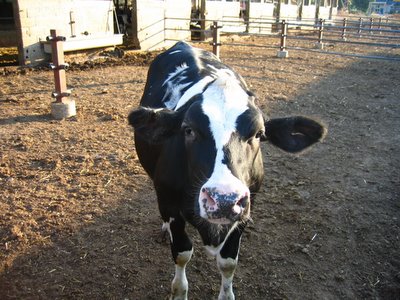Five or six years ago, when I first read about SHADH in the Los Angeles Times, I made a vague resolution to look up the Englishwoman who was flouting Israeli custom by rescuing donkeys. Time passed. More time passed. I was here, they were there. I might as well have forgotten about it. Little did I think that one day I'd be besotted with these same donkeys and unable to stop thinking or writing about them.
But how did this happen? In July 2005, I went to Israel for two months to write about the Gaza disengagement. I wrote one long account and planned to continue, but after Hurricane Katrina swept Gaza off the media map, I turned my sights elsewhere.
Committed animal lover though I am, I had never given the noble ass much thought. Alas, few do. After five visits to SHADH, what I see now is that they simply don't get good press. If folks realized that a happy donkey is as friendly and playful as a dog, these horse-shaped, rabbit-like creatures would be as popular as baby seals and as beloved as Great Danes, whom they resemble in temperament. Call me crazy, but I think it's all in the presentation. Of course, I do live in Hollywood, so perhaps my view of the world is warped. OK, definitely warped. But Lucy and all the volunteers at SHADH would agree with me: To know donkeys is to love them.
The first ones I met, however, were too tired and broken to show any spirit. These were the poor creatures who showed up at the Tayibeh clinic, where Lucy, Adi, Pierre the vet, and a few others tendered first aid and vitamins, bridle and hoof care, and fresh hay and water to all four-footed comers.
After three exhausting hours in the field that day, we went back to the facility at Gan Yoshiya, where nearly 100 donkeys have regular access to such tender mercies. There I saw beasts of a different stripe altogether. I hand-fed these bold, comical creatures carrots for an hour or two, completely losing track of time. Some flocked, others fled. (Just like the people I meet.) I took hundreds of photos that evening in the low barn light, and only stopped when the dust kicked up by hundreds of impatient hooves got the best of me. I was out there for so long, Adi thought I'd turned into a carrot and been eaten. The following day, when I started rhapsodizing about donkeys, my relatives thought I'd gone crazy.
On my next visit, I climbed into the corral with the "Bad Boys." One of them, a small brown scamp who shall remain nameless (his bridle had fallen off), was chasing another the length of the paddock. Up and back they ran, up and back. It was hilarious, though perhaps less so for the one in front. Eventually they stopped, and I made friends with the miscreant, whose aristocratic profile to this day adorns my computer desktop. I'll never forget the moment I realized that when he held my sleeve in his teeth he wasn't trying to bite me; he was just making sure I wouldn't go away.
There were other high points: playing with two-month-old Moonbeam on my third visit, and then marveling at Petal's one-day-old foal on my last. There were mixed blessings too: seeing how many of SHADH's charges have become lame or disfigured through human cruelty, while taking heart in the fact that for all their suffering, they're living out their days in something like paradise. And then there was the unalloyed gloom of the violence done to the Tayibeh shelter, an appalling example of just how low people can sink when borne down by greed. I presume that event is amply addressed elsewhere in this newsletter, but you can read my account at my blog, Lord Zim.
And that is why you are reading this rambling account now. While struggling to find an angle on SHADH for a proper article in a real publication, I started writing freely about the place on my own blog. By the time I left Israel in October, I'd written three extended tributes to donkeys and SHADH, all of them liberally illustrated with my photos. If you'd like to read these efforts in order, just go to Lord Zim (http://lordzim.blogspot.com), and click on the "September" link at left to find the first post, "Donkeys!" (You'll have to scroll down.) Then you can go back to the main page to find the annotated photo essay "Behold the Heroic Donkey" and "The Dark Side of Donkey Rehab," which addresses the Tayibeh incident and the actual work of providing care for distressed animals.
I look forward to my next visit to Gan Yoshiya. Moonbeam will likely be full-grown, but perhaps Petal's daughter will still be coltish. I may be thousands of miles away now, but I think about donkeys every time I turn on my laptop — especially that feisty little brown one.

The Aristocratic Profile
*




